It was time to roll up our water front villa and leave “the top of the world".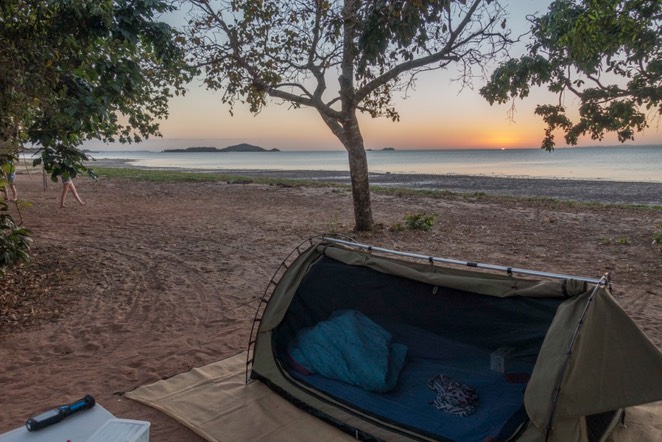
We decided to head west and check out Weipa on the Gulf of Carpentaria after all. This township was established when in the 1950s a geologist discovered that the area was rich in bauxite. When mining started in the early 60s the company CAMALCO built houses for the mine workers and the city grew from there. In those early times there were 5000 male workers to 9 female workers. The females must have become very good in running!? We were told that they had to be escorted to and from the mess halls by police.
(Sunset in Weipa)
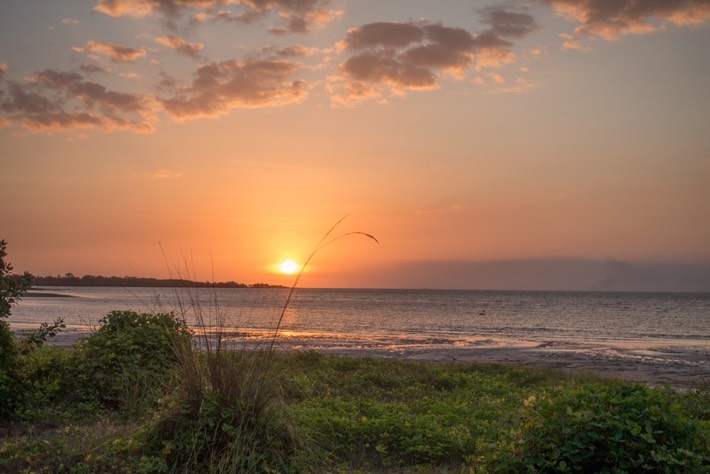
Today the balance of the sexes is quite different and female machine operators are revered as having a softer and more accurate touch than most of their male co-workers. In 2000 the company Rio Tinto/Alcan bought CAMALCO out.
As security is tight, nowadays the only access to the mines is via tour bus. If a rogue tourist car accidentally enters the mining area, it can bring proceedings to a halt for up to an hour. This wouldn’t make the workers too happy as they work under an efficiency bonus system.
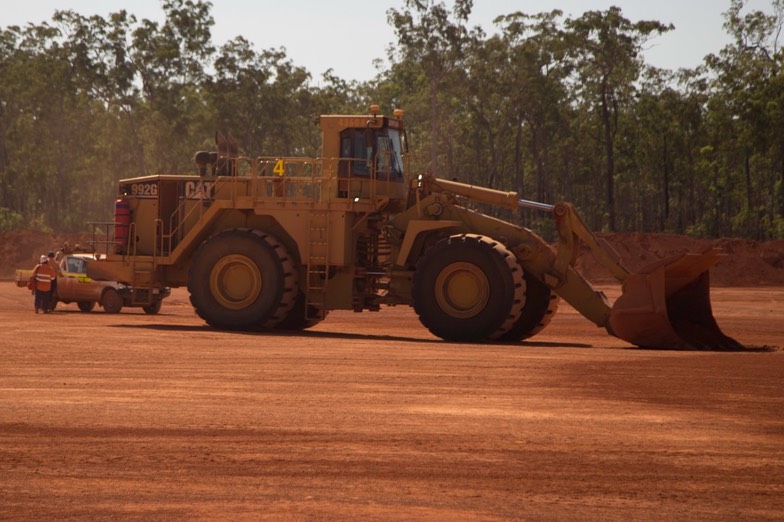
Bauxite is found in a layer of alluvia, silica and iron oxide about 1-2m under the top soil. Huge areas of land have been leased from the origional owners and divided into grids. After a grid is probed for content and quality of bauxite, it is walked with representatives of the aboriginal tribe to make sure, that no sacred site would be affected by future mining. The land is then cleared from vegetation and the topsoil removed and stored for later regeneration. A loader operator and truck driver then work in long shifts to move the red soil for processing. The mining trucks are huge. Each of their tyres costs $30,000! (See the size compared to the car next to it!)
Other than mining, Weipa is known for great fishing.
We caught some really nice coral trout and seafood at the camp grounds own little fish and chip shop, called “Barramunchies”.
As we left Weipa going south Austin was on a mission to get the worsening dirt roads behind him. It took full concentration to avoid the deep “dust holes”, potholes covered with powdery dust. The corrugations were terrible too! Luckily we are well padded or our bones would have rattled in symphony with everything else in the car!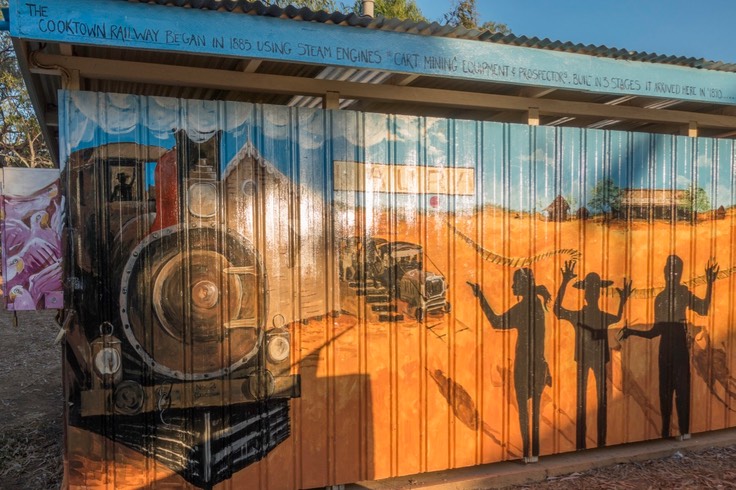
We finally made it to the bitumen road feeling like floating on cloud nine and stopped for the night in Laura. We were welcomed by flocks of galahs gathering near the old hotel where they know they get a good feed from the locals.
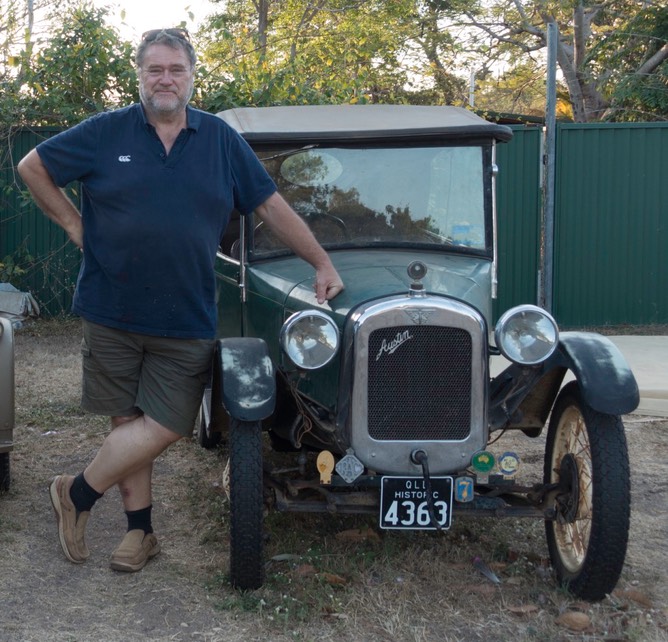
(painting of bush tucker)
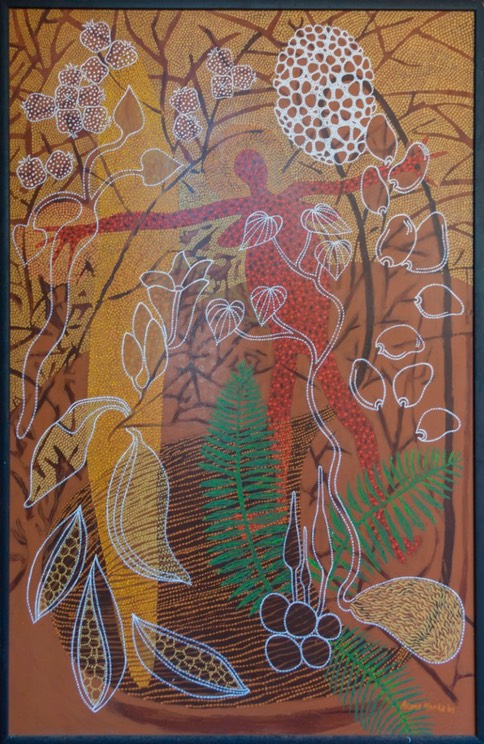
This little town from the Cape’s gold rush era has a colourful history. We felt somewhat deflated in our pride of conquering the cape when seeing the first car which was driven all the way to the Tip in 1927! Well, at least it was an “Austin”!
At the Quinkan Cultural Centre at Laura Aboriginal and white Australian history and culture is equally represented and interwoven. We learned about bush tucker and bush tracking, and also the conditions of indigenous cattle farm workers. They worked for minimal food and shelter, but apart from sometimes going “walkabouts “ were quite loyal and proud of their work. It reminded me of the 880 Torres Strait Islanders, who proudly volunteered to fight in WWII, more than 2 decades before being given citizen status and electoral rights.
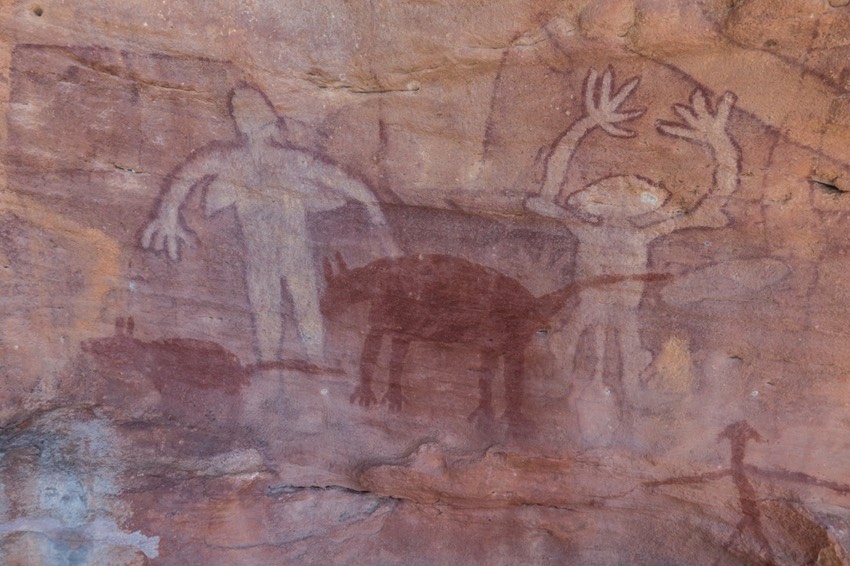 Just South of Laura and 500m up a sandstone escarpment is the UNESCO listed “Split Rock” art site. Beautiful aboriginal cave paintings, some 2000 years old, of dingoes, echidnas, fruit bats and good and evil spirits can be found under the rock shelves.
Just South of Laura and 500m up a sandstone escarpment is the UNESCO listed “Split Rock” art site. Beautiful aboriginal cave paintings, some 2000 years old, of dingoes, echidnas, fruit bats and good and evil spirits can be found under the rock shelves.
(Kangaroo on the left, Dingo in the Centre)
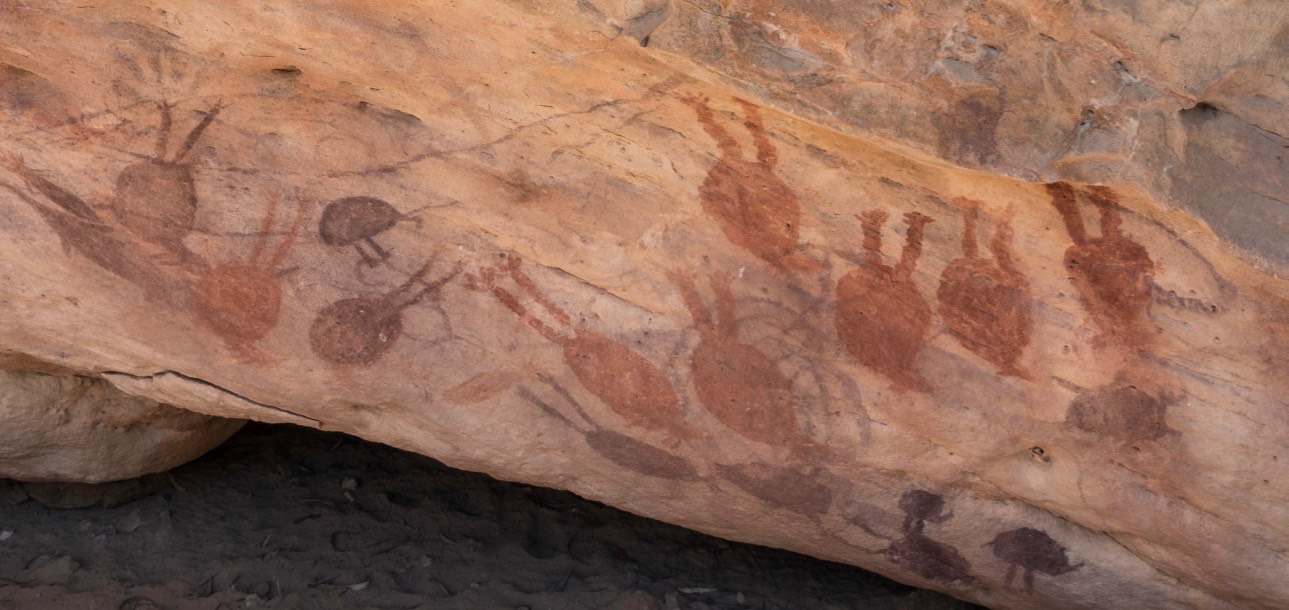
Fruit bats hanging from the ceiling